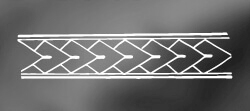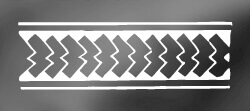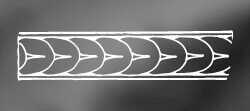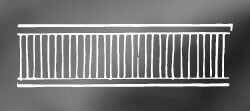Non Western Blog Analysis- ft New Zealand: Maori, Aotearoa Keeping Tradition Alive
Image of a Maori Ta Moko
This blog is about some art from the indigenous Polynesian people of mainland New Zealand, called Maori. How do you tell your story? Do you know your family tree? In this culture we strive to keep our culture flourishing. One of the best ways to do that is by sharing stories. Which is why Kirituhi, or skin art, and Ta Moko (face tattoos) are present in our culture. These designs are made up of numbers and patterns that mean specific things depending on placement. Here are some examples:
 | Pakati:Dog skin cloak, representative of warriors/battles/courage and strength. |
 | Hikuaua:Representative of Taranaki (a region of New Zealand) as well as prosperity, mackerel tail. |
 | Unaunahi:Fish scales that represent abundance and health. |
 | Ahu ahu mataroa:Shows talent and achievement in athleticism or sport and can also be representative of a new challenge. |
 | Taratarekae:From whale teeth. |
When you add every koru off a Manawa line you can create a family tree, Mothers , Fathers, Grandparents, Children , siblings , or anyone who has impacted you. There is a lot of information about the different processes of tattooing however, modern Maori tattoos are done using machines and needles which is significantly better for the skin and less painful.
__________________________________________________________________
Maori Jewlery is also an very respected art. Stones, bones and wood are used to carve symbolic pendants. My favorite is the pikorua which is sometimes called th path of love and life. It symbolizes the bond between two people, I have a jade one from my sister, it will always be with me.
My second favorite is the Korean which symbolizes a fern uncurling. The concept revolves around life, how it is ever changing, but still the same, and going back to the beginning. We are all human and should be understanding of each other. Love, change, adapt, repeat.
These are both jade, but very different quality, the color varies by place minded, and the clearer the stone the more pure and the more power it is considered to have. The spotted jade would probably be about $100. While the pikorua is closer to $300. All people can make these, they are not a technique claimed by a person, but came about by life and it’s natural course.
_____________________________________________________________________________________
Rock art designs are also a staple of Maori tradition. There are four staples, tattooing, weaving, carving, and painting. They all transcend time and are still quite common in NZ. What is interesting about the painting is the similarities to all the other art forms. There are specific patterns that mean X depending on region and people, then there are symbols which are often carved that appear often. The spiritual side of their painting is also strong, as they represent ancestors, and relationships and the life they have lived.
Thank you for looking at a beautiful culture with me. I love the Maori culture, it is a strong one, filled with love.
Poroporoaki
,Ava





Hi Ava,
ReplyDeleteSuch an interesting presentation! Thank you for sharing the tattoo patterns. We also have different sketching and patterns in our Inuit symbols and artifacts. My favorite is the Maori Jewelry. Such a beautiful piece carved. I would love to own one. There is something about jade that stands out, somewhat like a diamond in the dirt. Thank you for sharing!
Hello Ava, I enjoyed looking at your blog and its interesting components! I think it is outstanding and I learned more about the beautiful Maori culture. I think the jade jewelry is stunning and holds a lot of symbolization. I also think the tattoos are beautiful since each tattoo is unique in its design and meaning. The rock art is quite new to me; I have never seen this kind of art ever but I think it is remarkable that they carve drawings into stone.
ReplyDelete